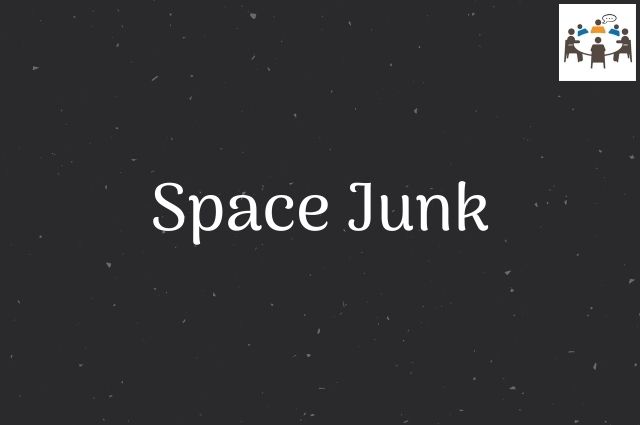What is Space debris:
- The first-ever satellite was launched by the then Soviet Union in 1957. Since then thousands of satellites have been launched. Some of them are no longer functioning. They sometimes collide with each other and smash into thousands of pieces. All these pieces and the defunct satellites are called “space debris” or “space junk”.
The need to tackle space debris:
- Space debris is a risk to the functioning satellites and astronauts. In November 2021, a chunk of a Chinese satellite almost hit International Space Station (ISS). This makes us realize the importance of tackling space junk.
- Earth’s gravitational pull attracts space debris back into the earth. Some objects burn up when they enter Earth’s atmosphere, but some larger objects do not burn. But fortunately, most of them fall into oceans since Earth is mostly covered by water.
- Due to the possible collisions with satellites, Low Earth Orbit (LEO), where most of the artificial satellites are placed may become unusable.
Space junk removal:
- Several space agencies such as NASA and ISRO are working on developing technologies to remove space debris.
- A Japanese company launched “End-of-Life Services by Astroscale-demonstration” (ELSA-d) in March 2021 to clear up space junk. The demo was performed in August 2021.
How can we avoid future space junk:
- Some satellites are made to burn up in the atmosphere and some satellites are sent even farther away from Earth.
- ISRO (Indian Space Research Organisation) is developing “Self-eating rockets” and “vanishing satellites” to prevent future space junk.
Conclusion:
Defunct satellites in space are a big risk to the functioning satellites. Several space agencies such as NASA and ISRO are working on developing technologies to remove space debris. They are also working on new technologies to avoid future space junk.
Your Turn…
Do you think we can manage to remove all the space junk? Express your thoughts through the comment section below. And subscribe to our blog to read answers to the trending GD topics.
References:
- “Antariksha vyardhalanu udchedham” article in the Eenadu Telugu newspaper dated 11th April 2022.
-
A chunk of Chinese satellite almost hit the ISS; they dodged it
-
What constitutes space debris and why they need our attention
Copyright @ Group Discussion Ideas.

